Breadcrumbs
- Home
- MD/PhD Program
- News
- Admissions blog: class of 1T9 - getting to know your curriculum in U of T Medicine
Admissions blog: class of 1T9 - getting to know your curriculum in U of T Medicine
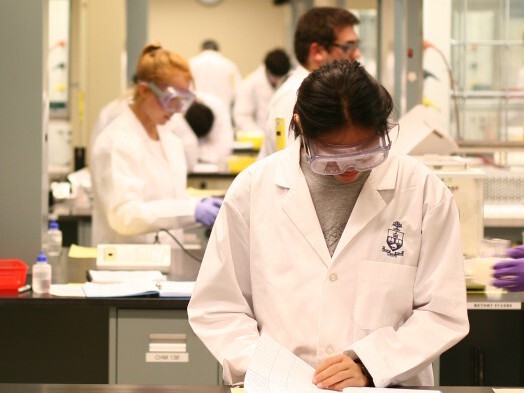
This blog post has been written by the VPs of Education from the UofT Medical Society, Brandon Tang (1T8) and Marcus Tan (1T7). It reflects our personal views on the curriculum as current students.
Congratulations Class of 1T9! For many of you, May 12, 2015 is a day that you will never forget.
In just a few months, you will be starting your medical school journey! Through this blog post, we hope to give you a tiny glimpse into what medical school will look like over the next two years.
Current Curriculum
Currently, most of the material that you need to know is delivered through ten lectures per week on average (some weeks more, others less). Depending on the course, there may also be labs, and/or small group learning (seminars, PBL or CBL) to provide hands-on exposure to the material.
Here’s a rough breakdown of what your two years will look like:
Structure and Function (STF) – First Year (Aug – Dec)
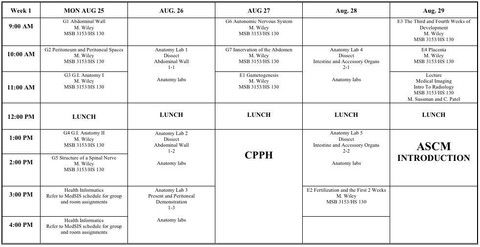
Community, Population and Public Health – First Year (Year-long)
In this course, you learn about the social determinants of health, tackling big questions such as, “What makes some people healthier than others?” Later in the year, you will work on a community based scholarship project. Your goal at the end of the project is to produce a product or service that will help your community organization. There are a huge range of projects that students have taken on, from the development of mobile phone apps to mentoring youth in the community through Big Brother.
Art and Science of Clinical Medicine – First Year (Year-long)
You get to play doctor every week, as we like to think of it. By the end of the year, you will know how to take a complete patient history and perform a head-to-toe physical exam. Best of all, you get to use your fancy stethoscope to listen to your hearts!
Metabolism and Nutrition (MNU) – First Year (Jan – Feb)
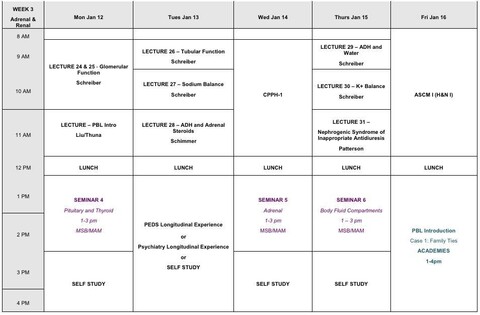
Brain and Behaviour (BRB) – First Year (Mar – May)
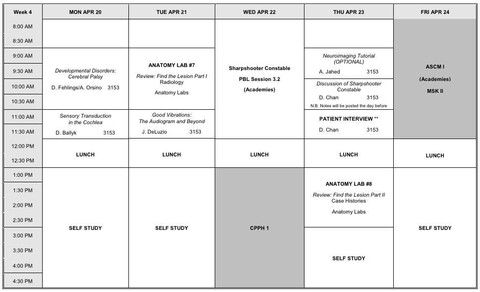
Mechanisms, Manifestations and Management of Diseases (MMMD) – Second Year (Year-long)
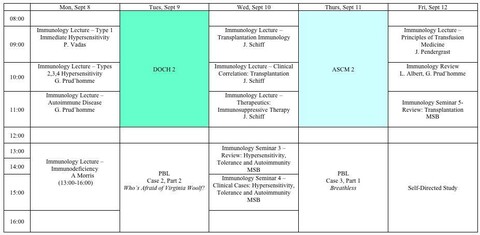
Alongside MMMD, you will continue to learn clinical skills in ASCM2 and continue to work on your community project in CPPH2.
The 1T9 Curriculum
The curriculum for 1T9 will be largely the same as 1T8 and previous years.
However, for six weeks (three in first-year, three in second-year), you will experience Case-Based Learning (CBL). Case-Based Learning is a small group educational modality that allows students to integrate learning the foundational medical sciences with clinical medicine. CBL also anticipates the clinical teaching that characterizes much of your education in clerkship. We explain in detail what CBL is in the section below. During these weeks, the majority of course content is delivered through small group learning, with minimal lectures. You also get a day off per week to shadow doctors or pursue your interests within or outside of medicine.
The CBL curriculum is continually being shaped and the faculty are very receptive to student feedback. There will be ample opportunities for you to provide ideas and suggestions, and to be involved in medical education at U of T!
Here is what a typical CBL week will look like:
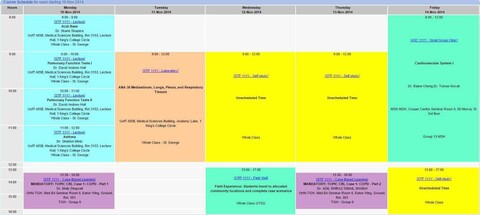
Problem-Based Learning (PBL) vs. Case-Based Learning (CBL) vs. Seminars
Seminars are similar to tutorials in undergrad. You get a problem set beforehand and take up the answers in a small group.
In PBL, you work through a novel patient case with your group and a physician tutor. You read through a patient story, look at lab results, generate a differential, and try to diagnose the patient. You decide on learning objectives as a group afterwards (different from CBL), research these at home, and then take them up as a group next time.
In CBL, you work through an online module with your small group. It simulates a patient interaction with a full history, physical exam findings, and radiology images. You work on a defined problem-set with your group (different from PBL), self-study at home based on your knowledge gaps, and take up the problem-set with your group next time.
| Pbl | CBL | Seminar | |
|---|---|---|---|
| Initial topic | Students are unaware of the topic since no resources are given ahead of time. | Students know the general content to be covered since they have had a few introductory lectures. | Students know the exact content to be covered in seminar since they are given the notes beforehand. |
| Advance preparation | No preparation needed prior to session. | Students are quite well-prepared prior to the session. | Students can attempt to complete the questions prior to the session. |
| control of session | Tutor provides minimal direction. | Tutor provides some direction. | Tutor provides some direction. |
| data seeking | A lot of research needs to be done after the PBL session to fill knowledge gaps. | Some research needs to be done after the session to fill any knowledge gaps. | No data seeking after the session. |
| goal | Application of lecture content in a simulated clinical scenario; introduction of new material. | Application of lecture content in an online, simulated clinical scenario; introduction of new material. | Application of lecture content in a simulated clinical scenario; rarely introduce new material. |
Curriculum in the Future
In the years to come, the curriculum will largely involve CBL, but the details are still being worked out. Stay tuned for a series of blog posts on the new curriculum in the coming year!
Conclusion
We hope that this post sheds some light onto what your experience will be like at U of T. However, apart from academics, there are a huge range of activities outside of the classroom to get involved with including sports, music, and student government. You have a lot to look forward to. Welcome to the family.